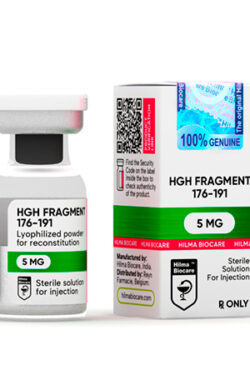Description
- Active ingredient: Semaglutide
- Type: Glucagon-like peptide-1 receptor agonist
- Form: Injections
Description
Semaglutide is a glucagon-like peptide-1 (GLP-1) receptor agonist produced by recombinant DNA biotechnology. Semaglutide is a GLP-1 analogue with 94% homology to human GLP-1. Semaglutide acts as a GLP-1R agonist that selectively binds to and activates GLP-1R. GLP-1R serves as a target for native GLP-1.
Mechanism of action
GLP-1 is a physiological hormone with several effects on glucose regulation and appetite, as well as on the cardiovascular system. The effect on glucose concentration and appetite is specifically mediated by GLP-1R, located in the pancreas and brain. Pharmacological concentrations of semaglutide reduce blood glucose concentration and body weight through a combination of effects described below. GLP-1Rs are also present in specific areas of the heart, blood vessels, immune system, and kidneys, where their activation may have cardiovascular and microcirculatory effects.
Unlike native GLP-1, the prolonged half-life of semaglutide is about 1 week. It allows you to use it 1 time per week. Binding to albumin is the main mechanism for the long-term action of semaglutide, which leads to a decrease in its excretion by the kidneys and protects against metabolic degradation. In addition, semaglutide is stable against cleavage by the enzyme dipeptidyl peptidase-4.
Semaglutide reduces blood glucose levels through glucose-dependent stimulation of insulin secretion and suppression of glucagon secretion. Thus, with an increase in blood glucose concentration, insulin secretion is stimulated and glucagon secretion is suppressed. The mechanism for lowering glycemic levels also includes a slight delay in gastric emptying in the early postprandial phase. During hypoglycemia, semaglutide reduces insulin secretion but does not reduce glucagon secretion.
Purpose to use
Semaglutide reduces total body weight and adipose tissue mass by reducing energy intake. This mechanism involves a general decrease in appetite, including an increase in satiety signals and a decrease in hunger signals, as well as improved control of food intake and a decrease in food cravings. Insulin resistance is also reduced, possibly due to weight loss. In addition, semaglutide reduces the preference for high-fat meals. In animal studies, semaglutide has been shown to be taken up by specific areas of the brain and increase key satiety signals and attenuate key hunger signals. By acting on isolated areas of brain tissue, semaglutide activates neurons associated with satiety and suppresses neurons associated with hunger.
In clinical studies, semaglutide had a positive effect on plasma lipids, lowered systolic blood pressure and reduced inflammation.
In animal studies, semaglutide inhibits the development of atherosclerosis by preventing further development of aortic plaques and reducing inflammation in the plaques.
Compared with placebo, semaglutide reduced caloric intake by 18-35% during three daily meals.
Compared with placebo, semaglutide reduced fasting triglycerides and VLDL cholesterol by 12% and 21%, respectively. Postprandial increases in triglycerides and VLDL cholesterol in response to a high-fat meal were reduced by more than 40%.
Semaglutide reduced glucose levels after the first dose.
How to use
Doses of semaglutide equal to 0.5 mg and 1 mg provide sufficient exposure of the drug in the body weight range from 40 to 198 kg.
The beginning dose is 0.25 mg once a week for the first 4 weeks. This will help give your body a chance to get used to the medicine.
At Week 5, you may increase the dose to 0.5 mg once a week.
The maximum dose is 2 mg once a week.
Make an injection once a week, on the same day every week.
Effects
- Improves the function of β-cells of the pancreas.
- Reduces the concentration of glucagon
- Lowers high blood glucose levels
- Decrease in insulin resistance
- A significant decrease in mean systolic blood pressure
- Weight loss mainly due to loss of adipose tissue
Side effects
- Diarrhea
- Constipation
- Nausea
- Vomiting
- Diarrhea
- Abdominal pain
- Constipation
- Heartburn
- Burping
Warnings
Some side effects can be serious. If you experience any of these symptoms call your doctor immediately or get emergency medical treatment:
- Ongoing pain that begins in the upper left or middle of the stomach but may spread to the back, with or without vomiting rash; itching; swelling of the eyes, face, mouth, tongue, or throat; or difficulty breathing or swallowing decreased urination; or swelling of legs, ankles, •
- Or feet vision changes fainting or dizziness
- Pain in upper stomach; yellowing of skin or eyes; fever; or clay-colored stools rapid heartbeat
How to prepare a solution
In order to prepare a solution for injection, you take a syringe already containing a diluent and inject it into a vial containing a lyophilized powder. Tilt the vial so that the needle touches the vial wall. Avoiding injecting the diluent directly into the lyophilized powder. The solvent should slowly flow down the wall of the bottle (do not fill everything at once and take your time).
Once al the diluent has been added to the peptide vial, mix gently (but do not agitate or shake the vial) until the lyophilized powder has dissolved and you are with a clear liquid. Now the drug is ready for use.
Never mix one peptide with another in the same syringe. This creates risks that fragile peptide molecules will be destroyed.
Application
The injection can be subcutaneous, intramuscular, depending on personal preferance.
Injections
- Injections could be made subcutaneously and intramuscularly with an insulin syringe.
- Disinfect the rubber cap of the drug and the injection site with alcohol.
- Draw the drug into a syringe and inject it slowly.
Drug profile
- Half-life: 165 hours
- Frequency of intake – once a week
Contraindications
- Limit alcohol while using this medication because it can increase your risk of developing low blood sugar.
How to store
- Store at a temperature not exceeding 30 ° C or at a temperature from 2 ° C to 8 ° C (in the refrigerator) for 56 days.
- Do not freeze
- Do not use semaglutide if it has been frozen
- Keep away from children
- Do not use after the expiry date





Reviews
There are no reviews yet.